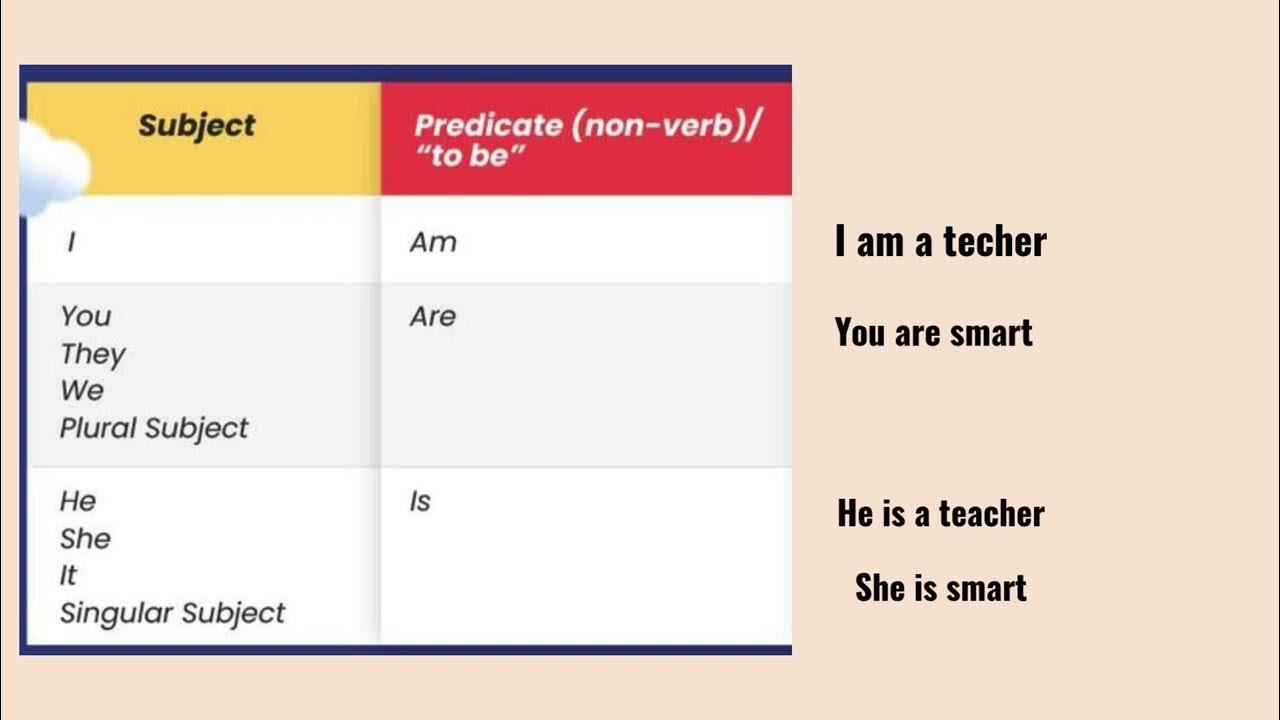SOAL SIMPLE PRESENT TENSE
Summary
TLDRThis video lesson focuses on practicing the simple present tense in English through various exercises. It highlights key indicators like 'every' and 'always' to identify the simple present tense structure. The instructor uses examples involving different subjects, such as singular and plural forms, and guides viewers on adding 's' or 'es' to verbs. The lesson includes both positive and negative sentences, as well as questions with the correct usage of 'do' and 'does.' The video concludes with practical exercises, aiming to help learners understand and apply the simple present tense effectively.
Takeaways
- 😀 Simple present tense is used when describing habitual actions or general truths.
- 😀 The keyword 'every' indicates the use of the simple present tense.
- 😀 For third-person singular subjects (he, she, it), verbs in the simple present tense should end with 's' or 'es'.
- 😀 When the subject is 'I', 'you', 'we', or plural nouns, no additional 's' or 'es' is added to the verb.
- 😀 Negative sentences in the simple present tense require 'do not' (or 'don't') and 'does not' (or 'doesn't') for third-person singular subjects.
- 😀 Questions in the simple present tense require the auxiliary verb 'do' or 'does' based on the subject.
- 😀 For example, 'Does he work?' uses 'does' for a singular third-person subject.
- 😀 If a subject is a name (e.g., 'Taehyung'), treat it as singular and use 'does' for questions and negatives.
- 😀 If a sentence is negative (e.g., 'He does not work'), 'not' must be included after the auxiliary verb.
- 😀 To form positive sentences with third-person singular subjects, add 's' or 'es' to the verb (e.g., 'She eats').
Q & A
What is the main focus of this lesson?
-The main focus of this lesson is to practice the simple present tense in English grammar through various exercises.
What is the significance of the word 'every' in the simple present tense?
-'Every' is a signal word that indicates the use of the simple present tense. It shows that the action happens regularly or habitually.
What should be considered when identifying the correct form of a verb in the simple present tense?
-When identifying the correct form of a verb in the simple present tense, you should consider the subject of the sentence. If the subject is a third-person singular noun (he, she, it), the verb should have an 's' or 'es' added.
How does the subject of a sentence affect the verb form in the simple present tense?
-If the subject is third-person singular (he, she, it), the verb typically takes an 's' or 'es' at the end. For other subjects (I, you, we, they), the verb does not take any additional ending.
What does 'everyday' indicate in a sentence using the simple present tense?
-'Everyday' signals that the action described in the sentence happens regularly or as a daily habit, which aligns with the use of the simple present tense.
How do you form a question in the simple present tense?
-To form a question in the simple present tense, you must use 'do' or 'does' (for third-person singular subjects) at the beginning of the sentence, followed by the subject and the base form of the verb.
What is the rule for forming negative sentences in the simple present tense?
-In negative sentences using the simple present tense, you use 'do not' (or 'don't') for subjects like 'I', 'you', 'we', 'they', and 'does not' (or 'doesn't') for third-person singular subjects.
What happens to the verb when the subject is 'he' or 'she' in the simple present tense?
-When the subject is 'he' or 'she', the verb typically ends in 's' or 'es', following the rule for third-person singular subjects in the simple present tense.
What is the correct answer to the question 'Do you love me?' in the simple present tense?
-The correct answer to 'Do you love me?' in the simple present tense is 'Yes, I do,' because the subject 'I' uses the base form of the verb 'do'.
How do you answer a negative question in the simple present tense?
-In response to a negative question, you use 'No' followed by 'do not' (or 'don't') or 'does not' (or 'doesn't') depending on the subject. For example, 'No, I do not.'
Outlines

このセクションは有料ユーザー限定です。 アクセスするには、アップグレードをお願いします。
今すぐアップグレードMindmap

このセクションは有料ユーザー限定です。 アクセスするには、アップグレードをお願いします。
今すぐアップグレードKeywords

このセクションは有料ユーザー限定です。 アクセスするには、アップグレードをお願いします。
今すぐアップグレードHighlights

このセクションは有料ユーザー限定です。 アクセスするには、アップグレードをお願いします。
今すぐアップグレードTranscripts

このセクションは有料ユーザー限定です。 アクセスするには、アップグレードをお願いします。
今すぐアップグレード関連動画をさらに表示

MKU Bahasa Inggris: Unit 06 Work and Leisure

ENGLISH Language Course2

PEMBAHASAN LENGKAP LONGMAN TOEFL EXERCISE SKILLS 33-36 || PROBLEMS WITH THE USE OF THE VERB

SIMPLE PRESENT TENSE LENGKAP

Present Perfect Verb Tense - English Grammar Lesson

Materi Self Introduction (Using 'Be' and ' Have') Mata Pelajaran Bahasa Inggris X
5.0 / 5 (0 votes)
